GALACTIC COSMIC RAYS IN THE LOCAL INTERSTELLAR MEDIUM: VOYAGER 1 OBSERVATIONS AND MODEL RESULTS
- PMID: 34646042
- PMCID: PMC8507217
- DOI: 10.3847/0004-637x/831/1/18
GALACTIC COSMIC RAYS IN THE LOCAL INTERSTELLAR MEDIUM: VOYAGER 1 OBSERVATIONS AND MODEL RESULTS
Abstract
Since 2012 August Voyager 1 has been observing the local interstellar energy spectra of Galactic cosmic-ray nuclei down to 3 MeV nuc-1 and electrons down to 2.7 MeV. The H and He spectra have the same energy dependence between 3 and 346 MeV nuc-1, with a broad maximum in the 10-50 MeV nuc-1 range and a H/He ratio of 12.2 ± 0.9. The peak H intensity is ~15 times that observed at 1 AU, and the observed local interstellar gradient of 3-346 MeV H is -0.009 ± 0.055% AU-1, consistent with models having no local interstellar gradient. The energy spectrum of electrons (e - + e +) with 2.7-74 MeV is consistent with E -1.30±0.05 and exceeds the H intensity at energies below ~50 MeV. Propagation model fits to the observed spectra indicate that the energy density of cosmic-ray nuclei with >3 MeV nuc-1 and electrons with >3 MeV is 0.83-1.02 eV cm-3 and the ionization rate of atomic H is in the range of 1.51-1.64 × 10-17 s-1. This rate is a factor >10 lower than the ionization rate in diffuse interstellar clouds, suggesting significant spatial inhomogeneity in low-energy cosmic rays or the presence of a suprathermal tail on the energy spectrum at much lower energies. The propagation model fits also provide improved estimates of the elemental abundances in the source of Galactic cosmic rays.
Keywords: ISM: abundances; ISM: clouds; cosmic rays.
Figures
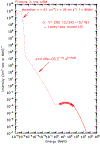
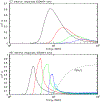

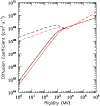

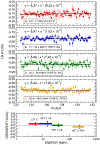


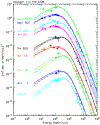
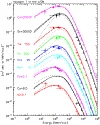






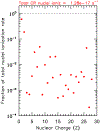


References
-
- Ackermann M, et al. 2012, ApJ, 750, 3
-
- Adriani O, Barbarino GC, Bazilevskaya GA, et al. 2011, Sci, 332, 69 - PubMed
-
- Adriani O, Barbarino GC, Bazilevskaya GA, et al. 2014, ApJ, 791, 93
-
- Agostinelli S, Allison J, Amako K, et al. 2003, NIMPA, 506, 250
-
- Aguilar M, Aisa D, Alpat B, et al. 2014b, PhRvL, 113, 221102 - PubMed
Grants and funding
LinkOut - more resources
Full Text Sources
Miscellaneous
